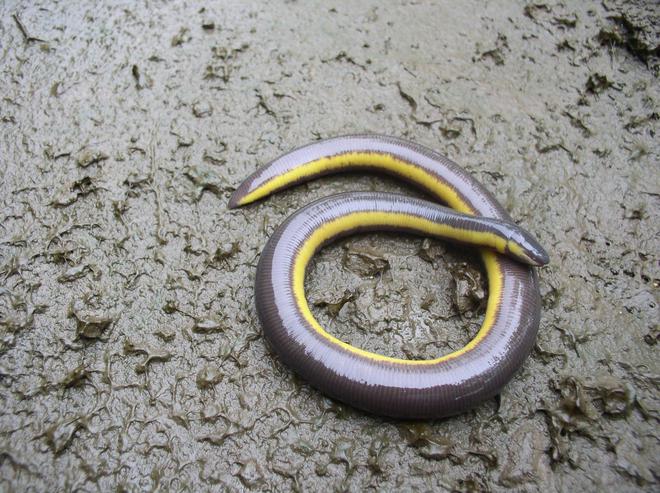
A new paper analysing two decades of data from around the world has found that climate change is emerging as one of the biggest threats to frogs, salamanders, and caecilians.
The study titled ‘Ongoing declines for the world’s amphibians in the face of emerging threats’ was published on October 4 in the scientific journal, Nature.
The study is based on the second global amphibian assessment coordinated by the Amphibian Red List Authority, a branch of the Amphibian Specialist Group of the International Union for Conservation of Nature’s Species Survival Commission and managed by Re:wild, a wildlife conservation group.
The assessment evaluated the extinction risk of more than 8,000 amphibian species from all over the world, including 2,286 species evaluated for the first time. More than 1,000 experts across the globe, including scientists and researchers from Assam-based biodiversity conservation organisation, Aaranyak, and other Indian institutions, contributed their data and expertise.
The data revealed that two out of every five amphibians are threatened with extinction. These data will be published on the IUCN Red List of Threatened Species.
Between 2004 and 2022, a few critical threats have pushed more than 300 amphibians closer to extinction, according to the study. Climate change was the primary threat for 39% of these species.
This number is expected to rise as better data and projections on species’ responses to climate change become available. Climate change is especially concerning for amphibians in large part because they are particularly sensitive to changes in their environment, the study said.
“As humans drive changes in the climate and to habitats, amphibians are becoming climate captives, unable to move very far to escape the climate change-induced increase in frequency and intensity of extreme heat, wildfires, drought and hurricanes,” Jennifer Luedtke Swandby, Re:wild’s manager of species partnerships said.
“Our study shows that we cannot continue to underestimate this threat. Protecting and restoring forests is critical not only to safeguarding biodiversity but also to tackling climate change,” she said.
Human assault on amphibian habitat
Habitat destruction and degradation as the result of agriculture (crops, livestock like cattle and livestock grazing, and silviculture), infrastructure development and other industries are still the most common threats, the paper said.
Habitat destruction and degradation affect 93% of all threatened amphibian species, the authors pointed out while underlining the importance of expanded habitat and corridor protection in the places most important for biodiversity.
Disease caused by the chytrid fungus – it decimated amphibian species in Latin America, Australia, and the United States – and overexploitation also continue to cause amphibian declines.
The study also found that three out of every five salamander species are threatened with extinction primarily as the result of habitat destruction and climate change, making them the world’s most threatened group of amphibians.
North America is home to the most biodiverse community of salamanders in the world.
The Nature paper provides an update to the landmark 2004 document that was based on the first global amphibian assessment for the IUCN Red List, which revealed the unfolding amphibian crisis for the first time and established a baseline for monitoring trends and measuring conservation impact.
According to this new study, nearly 41% of all amphibian species that have been assessed are currently globally threatened, considered critically endangered, endangered, or vulnerable. This is compared to 26.5% of mammals, 21.4% of reptiles and 12.9% of birds.
Four amphibian species were documented as having gone extinct since 2004 — the Chiriquí harlequin toad (Atelopus chiriquiensis) from Costa Rica, the sharp-snouted day frog (Taudactylus acutirostris) from Australia, Craugastor myllomyllon and the Jalpa false brook salamander (Pseudoeurycea exspectata), both from Guatemala.
Twenty-seven additional critically endangered species are now considered possibly extinct, bringing the total to more than 160 critically endangered amphibians that are considered possibly extinct. The assessment also found that 120 species improved their Red List status since 1980.
An action plan for conservation
Of the 63 species that improved as the direct result of conservation action, most improved due to habitat protection and management.
Conservationists will use the information from this study to help inform a global conservation action plan, prioritise conservation actions at the global level, seek additional resources, and influence policy that can help reverse the negative trend for amphibians.
“Amphibians are disappearing faster than we can study them, but the list of reasons to protect them is long, including their role in medicine, pest control, alerting us to environmental conditions, and making the planet more beautiful,” Kelsey Neam, Re:wild species priorities and metrics coordinator said.
“And while our paper focuses on the effects of climate change on amphibians, the reverse is also critically important: that the protection and restoration of amphibians is a solution to the climate crisis because of their key role in keeping carbon-storing ecosystems healthy. As a global community it is time to invest in the future of amphibians, which is an investment in the future of our planet,” he said.
The study is crucial for populous and infrastructure development-focused India, home to some of the rarest species of amphibians.
“The results will strongly highlight how the national level priorities for species conservation need to be aligned to the change in the status of amphibians and the threats that impact amphibians. It should trigger consultations within countries on priorities and fundraising for amphibian conservation efforts,” said Karthikeyan Vasudevan, a co-author and chief scientist at the CSIR-Centre for Cellular and Molecular Biology in Hyderabad.







